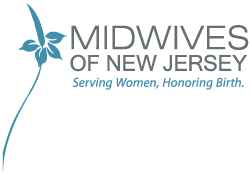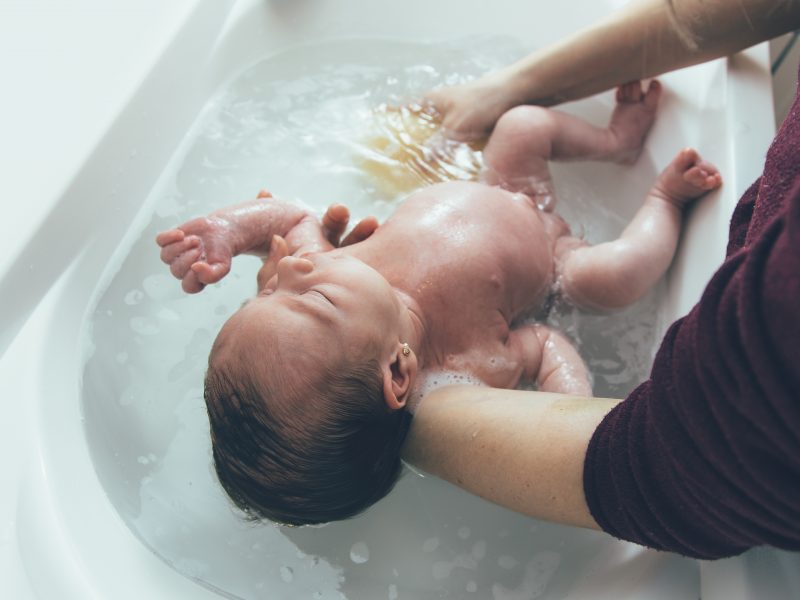Most hospitals give newborns a routine bath in the hours after birth, which may seem like a simple, risk- free courtesy. After all, babies are born a bit slimy! However, there are many reasons that the newborn bath is perhaps the most harmful of all newborn procedures. Babies begin to establish a healthy microbial population after their exposure to their mother’s vagina, reducing the risk of digestive issues, allergies, and asthma. This “microbiome” is crucial for babies, and it is one of the many compelling reasons that a vaginal birth is healthier than a cesarean section: “The microbes passed from a mother’s vagina to an infant’s gut can help an infant face the many challenges of his or her new environment. For example, during pregnancy, the composition of bacteria in a woman’s vagina changes so that there is a higher concentration of Lactobacillus, a kind of bacteria that aids in the digestion of milk. While he or she might eventually get colonized, a baby born by cesarean section will miss out on immediately acquiring these beneficial bacteria. And mode of delivery has been associated with differences in intestinal microbes even seven years after delivery” (source).
It stands to reason that washing away the evidence of a baby’s passage into the world could do more harm than good to the establishment of beneficial bacteria. Babies are not born with a perfect internal thermostat; they get cold easily. Often, a newborn’s temperature drops after a bath requiring more time away from mom and dad under a warming light. Without the bath, baby’s temperature is perfectly regulated when skin-to-skin with his/her mother. This has the added benefit of promoting breastfeeding, since an alert baby, not worn out by a quick bath in the nursery, is more likely to find the breast and nurse frequently while held skin-to-skin with his/her mother. Because mom and baby both smell like amniotic fluid so soon after birth, identifying the breast for nursing is much easier for a baby whose senses haven’t been overwhelmed by a bath. Finally, and perhaps most compelling, are the miraculous properties of vernix caseosa, the white, waxy substance present on newborns’ skin. Antimicrobial, moisturizing, lubricating, water-resistant, temperature-regulating….Vernix is an all- purpose baby protector for the first 24 hours (at least) after birth. “Modern science and Western Medicine recognizes the benefits of vernix. A study regarding the significance of vernix was published in the American Journal of Obstetrics and Gynecology, 191 (6), 2090-2096, titled: Antimocrobial Properties of Amniotic Fluid and Vernix Caseosa are Similar to Those Found in Breast Milk.
This study revealed that a number of immune substances were present in both amniotic fluid and vernix samples. Tests using antimicrobial growth inhibition essays show these substances are effective at deterring the growth of common perinatal pathogens—group B. Streptococcus, K. pneumoniae, L. monocytogenes, C. albicans and E. coli” (source).
With all of these reasons to wait, what is the rush to wash brand new babies? In reality, just after birth, a person is about as clean as they will ever be. So wait to wash your baby….the sweet, tentative and loving touch of parents is a nicer introduction to getting clean than the well-intentioned gloved hands of a hospital nurse, and will help reinforce the bond you so carefully protected by keeping your newborn, vernix and all, skin-to-skin after birth.
By Britt Sando CD (DONA), LCCE






 How Your Baby Can Benefit from a Gentle Birth – Seminar
How Your Baby Can Benefit from a Gentle Birth – Seminar